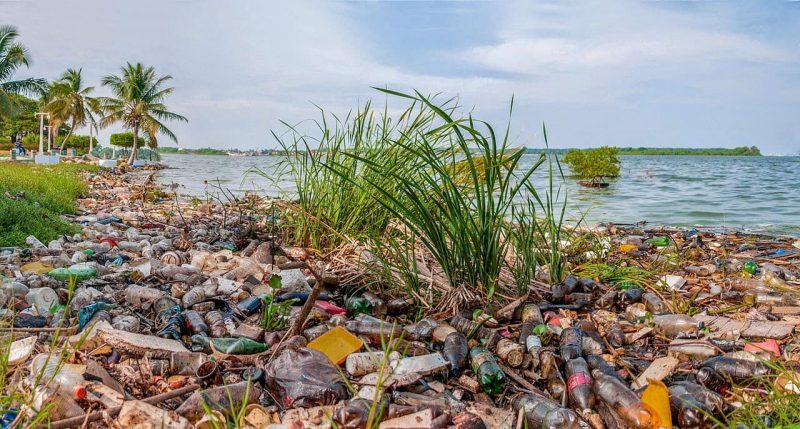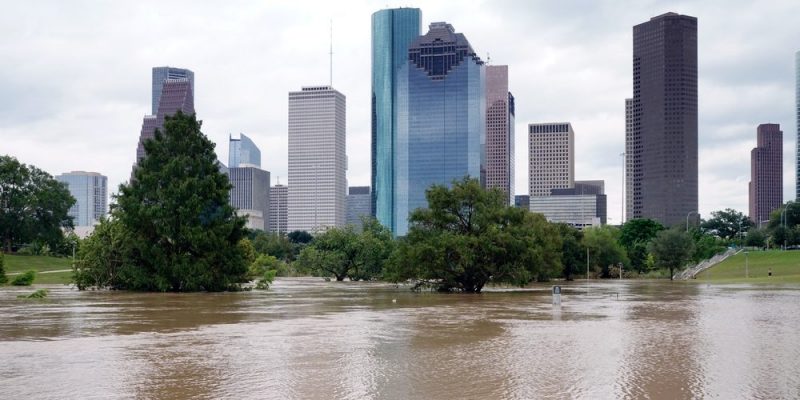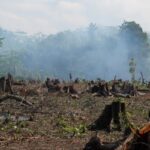We explain what soil pollution is and what its causes and consequences are. Some examples and possible solutions.

What is soil pollution?
When we talk about soil contamination, as in the cases of water and the atmosphere, we refer to the loss of its natural quality due to the presence of foreign or toxic substances which change its chemical properties and make it incompatible with life, both natural (wild fauna and flora) and human (agriculture, gardening, etc.).
These polluting substances can be liquid, solid or even gaseous, and often cause unpredictable or uncontrollable chemical reactions contrary to the stability necessary for the development of life. Some of these pollutants tend to be oil, pesticides and agrochemicals, industrial waste or garbage, when not radioactive substances or heavy metals, the result of human industrial and energy work.
Some of the common symptoms of soil contamination have to do with the physical and observable presence of waste, but above all with the absence of plant (and sometimes animal) life, the destruction of the upper layers of the Earth's crust or degradation of the landscape. All these symptoms usually lead to the deterioration of the health of the inhabitants of the area, if not to extinctions or animal migrations.
On the other hand, soil contamination usually spreads to other elements, such as water and air since the rains “wash” the soil, taking all the polluting substances to the rivers, seas and groundwater that will then deteriorate other ecosystems.
Causes of soil pollution
As has been said, soil contamination usually responds to the poor disposal of processed waste from industrial activity commercial or energetic of the human being, such as plastics, chemicals, toxins or solvents. The extraction of hydrocarbons (and especially aggressive methods such as fracking) is also an important source of soil damage and contamination.
In many cases, the origin of these substances is warlike such as war mines or the material spread by bombs of all types (explosive, incendiary, atomic, etc.), beyond the physical damage that the impact generates.
Other possible, although minority, sources of pollution that are not linked to human work are volcanic eruptions, geological faults that expose heavy subsoil materials, or meteorite impacts.
Consequences of soil contamination

The main consequence of soil contamination has to do, as we said, with the loss of its fertility and its incompatibility with animal, plant and human life. Contaminated soils often remain sterile and empty for as long as it takes nature and the elements to clean up the toxic substances or break them down into other harmless elements, and even then soil recovery will take time.
On the other hand, contaminated soils their water absorption capacity may be adulterated producing unexpected floods or, on the contrary, wilted soils with unsustainable pH (very acidic or very basic), which in the presence of water give rise to toxic and deadly substances. This often leads to the devastation of landscapes.
Solutions for soil pollution
Depending on the specific case, contaminated soils can be decontaminated, either by allowing time to pass until the harmful elements are dissolved by rain or washed away to other geographies, or actively applying materials that counteract the toxic effect. Many of them are biological, such as microorganisms or plants, capable of fixing or degrading contaminants.
In general terms, however, prevention and responsibility in human activities is the best remedy for this matter.
Examples of soil contamination
Some examples of soil contamination are:
- After the nuclear reactor explosion in the Soviet city of Chernobyl in 1986, the winds spread radioactive particles throughout the countryside, which transmitted the poison to the flora and all agricultural crops. The layers of radioactive soil had to be buried in huge pits to keep them away from life on the surface. There are still uninhabitable and uncultivable areas, such as the city of Pripyat, Ukraine.
- Brazilian illegal miners, called garimpeirosthey deteriorate the soil of the Amazon Rainforest in search of gold to sell. To do this, they use large jets of water that liquefy the soil and also quantities of mercury, which poison the soil and water.
- In the Collstrop region of Denmark, entire segments of soil were contaminated and rendered unusable by arsenic and chromium between 1963 and 2007, when the issue was remedied using water treatment waste.





